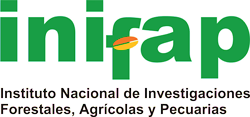Altitudinal morpHological Variation among Pinus devoniana lindl. populations of putatiVe Variety cornuta martínez in state of micHoacan
DOI:
https://doi.org/10.29298/rmcf.v3i13.486Keywords:
altitudinal variation, cluster analysis, morphological variation, Pinus devoniana lindl., Pinus michoacana martínez var. cornuta martínez, principal componentsAbstract
Understanding the patterns of morphological variation along environmental gradients is useful to distinguish taxonomical entities and take management decisions. morphological variation of cones, seeds, fascicles and buds were analyzed on individuals from 16 natural Pinus devoniana (ex P. michoacana) populations collected along an altitudinal transect (from 1,600 to 2,450 m, one population every 50 m of altitudinal difference) near morelia city, in the state of michoacán (mexico). univariate (anoVa) and multivariate (principal components and cluster) statistical analyses were conducted, in order to clarify if putative varieties exist. there is a significant pattern of morphological altitudinal variation, where populations from lower altitudes have larger cones, needles and seeds than populations from middle and higher altitudes. the multivariate analysis discriminated individuals and populations in two clearly distinctive groups: one group made of individuals from populations originated between 1,600 m to 1,850 m of altitude, which would correspond to Pinus devoniana var. devoniana (equivalent to P. michoacana typical); a second group is composed of individuals from populations originated between 1,950 m to 2,450 m, which would correspond to Pinus devoniana var. cornuta (ex P. michoacana var. cornuta). thus, we suggest the separation of P. devoniana in at least two varieties: P. devoniana var. devoniana and P. devoniana var. cornuta.
Downloads
Downloads
Published
How to Cite
Issue
Section
License
The authors who publish in Revista Mexicana de Ciencias Forestales accept the following conditions:
In accordance with copyright laws, Revista Mexicana de Ciencias Forestales recognizes and respects the authors’ moral right and ownership of property rights which will be transferred to the journal for dissemination in open access.
All the texts published by Revista Mexicana de Ciencias Forestales –with no exception– are distributed under a Creative Commons License Attribution-NonCommercial 4.0 International (CC BY-NC 4.0), which allows third parties to use the publication as long as the work’s authorship and its first publication in this journal are mentioned
The author(s) can enter into independent and additional contractual agreements for the nonexclusive distribution of the version of the article published in Revista Mexicana de Ciencias Forestales (for example, include it into an institutional repository or publish it in a book) as long as it is clearly and explicitly indicated that the work was published for the first time in Revista Mexicana de Ciencias Forestales.
For all the above, the authors shall send the form of Letter-transfer of Property Rights for the first publication duly filled in and signed by the author(s). This form must be sent as a PDF file to: ciencia.forestal2@inifap.gob.mx
This work is licensed under a Creative Commons Attribution-Noncommercial 4.0 International license.






